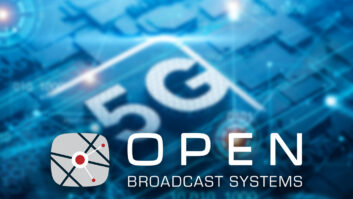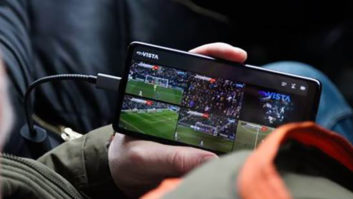As part of this year’s MediaTech Outlook Report, TVBEurope invited Matt Stagg, BT Sport’s director of mobile strategy, to give us his thoughts on the 5G landscape.
Where is the broadcast market currently in its relationship with 5G deployment, and what progress (or other) have we seen this year?
The broadcast market has some of the most advanced and well-defined requirements for 5G and has been working alongside the mobile industry to ensure that these get developed. The primary requirement is to guarantee the bandwidth, latency and availability on the uplink. This has not been possible with 4G as there is a single network being used by everyone and in certain conditions you get congestion and can lose the live feed. 5G will have advanced features and functionalities such as network slicing and private networks that can be configured to create a true ‘broadcast-grade network’ just as you have with fibre and satellite.
What effect has the pandemic period had on development in this area of the market: have we seen any accelerated technology adoption/deployment, or has it had a more pausing effect?
The pandemic forced us to accelerate the way we use mobile and fixed internet technology. We needed to rapidly move to a distributed production model as we could not have everyone in the gallery together. We used 4G and WiFi to connect everything together, allowing us to have the production crew in different locations but working as if they were in the same gallery. It worked well but we were using ‘best effort’ networks, broadcast-grade 5G would have given us a lot more confidence that connectivity would not drop or degrade. Together with EE, we also launched BT Sport Match Day Experience feature on the BT Sport app offering 360 pitch-side viewing, a Watch Together feature, Dolby Atmos and augmented reality over EE’s 5G network
Given what you’ve seen in use cases and trials, just how much of an enabling impact do you think 5G is going to have on our sector?
The more we progress through various trials and proof of concepts, it is becoming clearer that 5G is going to totally revolutionise our industry. We are seeing end to end innovation, from 5G enabled cameras all the way through to deep immersive experiences such as volumetric video and augmented reality. Another interesting outcome is that many of the innovations coming out of our sector are providing new opportunities in other industries, an example being the work we are doing on volumetric capture and distribution could be transferable to opportunities in healthcare and education.
Finally, what’s the timescale and are there more Gs (6/7/8) to come?
It’s been typical for a new mobile network standard to take the spotlight every decade or so since the launch of 1G in 1979. That means that 6G networks might roll out sometime around 2030, or at least that’s when most telecom companies will be running 6G trials and when we’ll see phone manufacturers tease 6G-capable phones. However, it’s common for work to start as long as a decade prior to any real implementation of a new network technology, which might be why you’ll start hearing about 6G before. As we progress toward more converged networks, it is likely that at some point the industry will stop using ‘Gs’ and move to just talking about connectivity.







